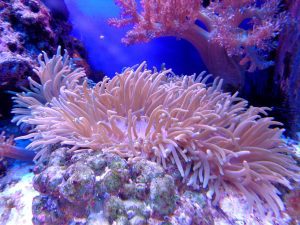Coral reefs are one of nature’s wonders. Often referred to as “the rainforests of the sea”, they are home to approximately 25 percent of all marine animals. The reef ecosystem is also exquisitely beautiful, as snorkelers and scuba divers around the world know. It’s therefore not surprising that so many people would love to become part of a coral reef when they die. So, how is it possible, and is the process good for the environment?
In this article, we’ll explore how memorial reefs are created, mention some of the companies involved in this process, and touch on the benefits.
How are memorial reefs formed?

Memorial reefs are created from “reef balls”. These artificial structures combine human cremated remains with specially designed concrete forms designed to mimic natural reef development. It’s important to know that the concrete used is specially modified to bring the pH content of the reef ball close to neutral. Concrete is normally highly alkaline, which would adversely affect the marine environment.
The next step if for human ashes to be carefully mixed into the concrete. The resulting mixture is poured into customized reef ball molds that create a textured outer surface. Once the concrete has set, the balls are unmolded, and the result is a structure perfect for attracting micro-organisms, and promoting the growth of vibrant underwater communities.
The environmental benefits of memorial reefs
- Thriving ecosystems. Coral reefs play a crucial role in marine biodiversity. They provide habitats for countless species, including fish, crustaceans, and mollusks, while also supporting algae and seagrasses. Memorial reefs contribute to the growth of these vibrant ecosystems, offering new homes and breeding grounds for marine life.
- Reef restoration. Memorial reefs have also been used for reef restoration efforts. Damaged or depleted reefs can benefit from the introduction of reef balls, which aid in the recovery and preservation of these vital underwater habitats.
Eternal Reefs: Leading the way
Eternal Reefs is a pioneering company in the field of memorial reefs, and has been creating these wonderful living legacies for over two decades. They offer families the opportunity to transform their loved ones into beautiful coral reefs, combining environmental stewardship with lasting remembrance. The company provides families with the option to personalize their memorial reefs, from choosing the location to participating in the casting process. Eternal Reefs also plays a vital role in raising awareness about marine conservation, regularly hosting educational events and activities for families to encourage a deeper connection to the marine world.
Oyster reefs with a purpose
Resting Reef, a company with a similar concept and process to Eternal Reefs, focuses on the creation of oyster reefs. Oysters are known for their critical role in water filtration and habitat creation. By combining human ashes with concrete, Resting Reef constructs oyster reefs that serve both as memorials and as essential ecological elements. The resulting reefs act as water purifiers, improving water quality and supporting the local marine life. Their presence can also help to restore damaged coastlines and protect against erosion.
Where are memorial reefs allowed?
It is becoming increasingly easy to find the perfect location for your own memorial reef or that of a loved one. The company Memorial Reefs International offers a huge list of locations, and states that it’s possible to choose from locations across 70 countries. In the United States, reef balls have been deployed along the coasts of Florida, Georgia, South Carolina, North Carolina, and Texas, among other locations. In the United Kingdom, the first dedicated memorial reef is situated off the Jurassic coast, near Weymouth in Dorset.
Conclusion
Memorial reefs offer an extraordinary opportunity to celebrate the legacy of our loved ones in the beauty and wonder of the marine environment. And as climate change continues to impact our world, especially our oceans, preserving our ashes in a reef ball is one way we can help to bring new life to the seas.
